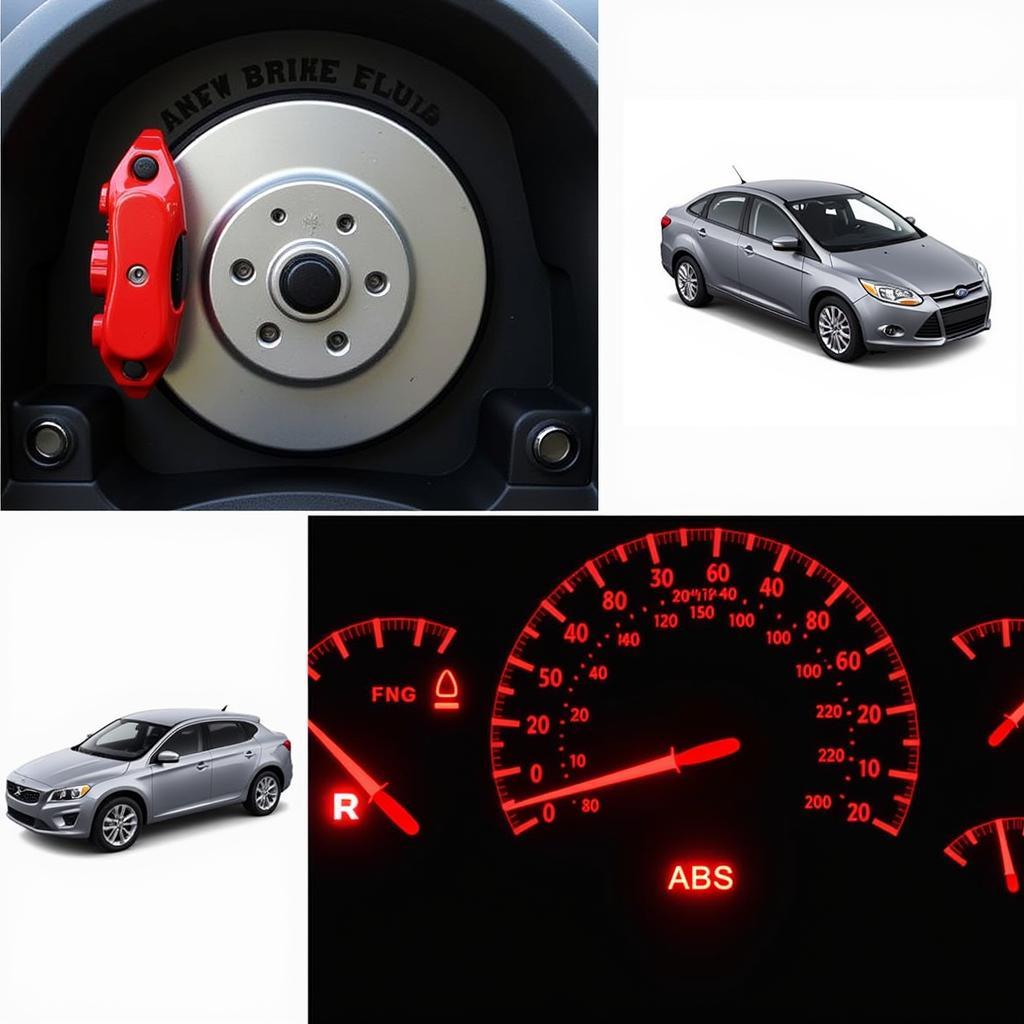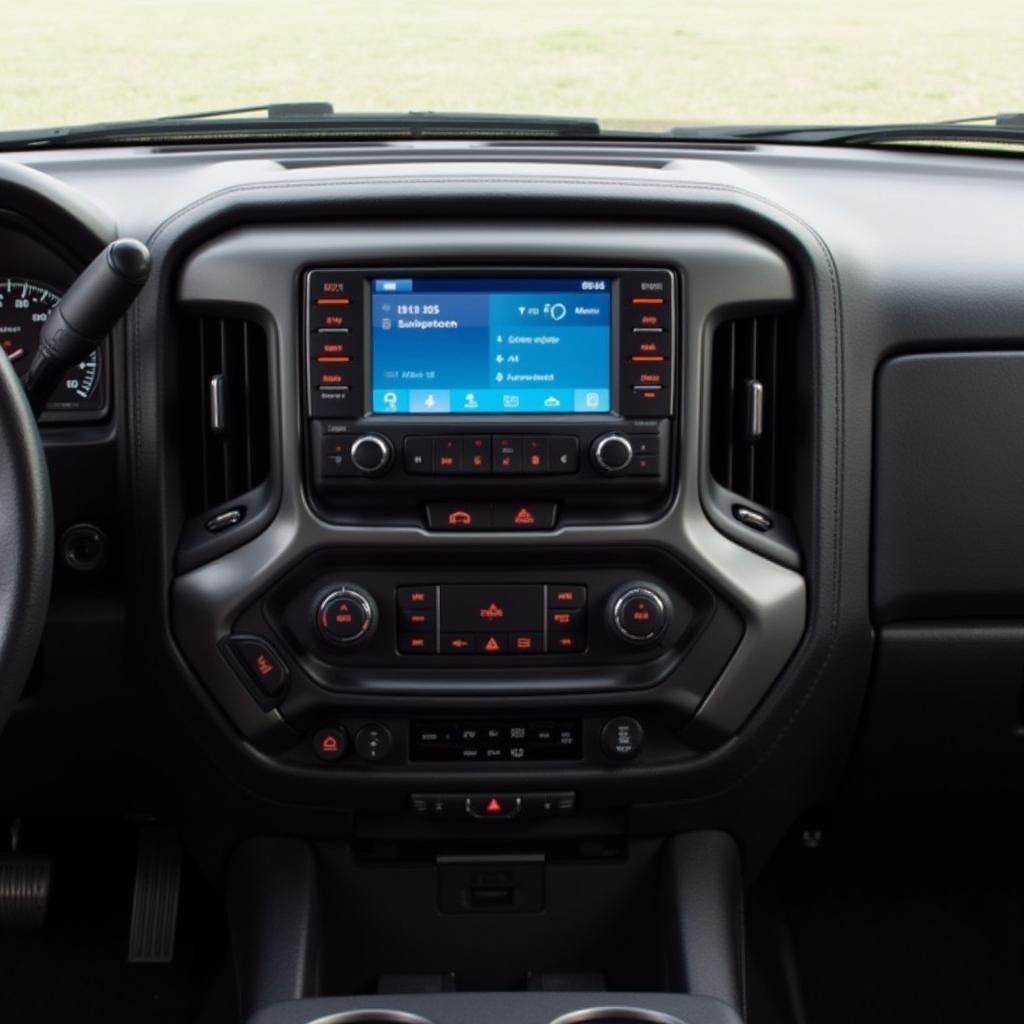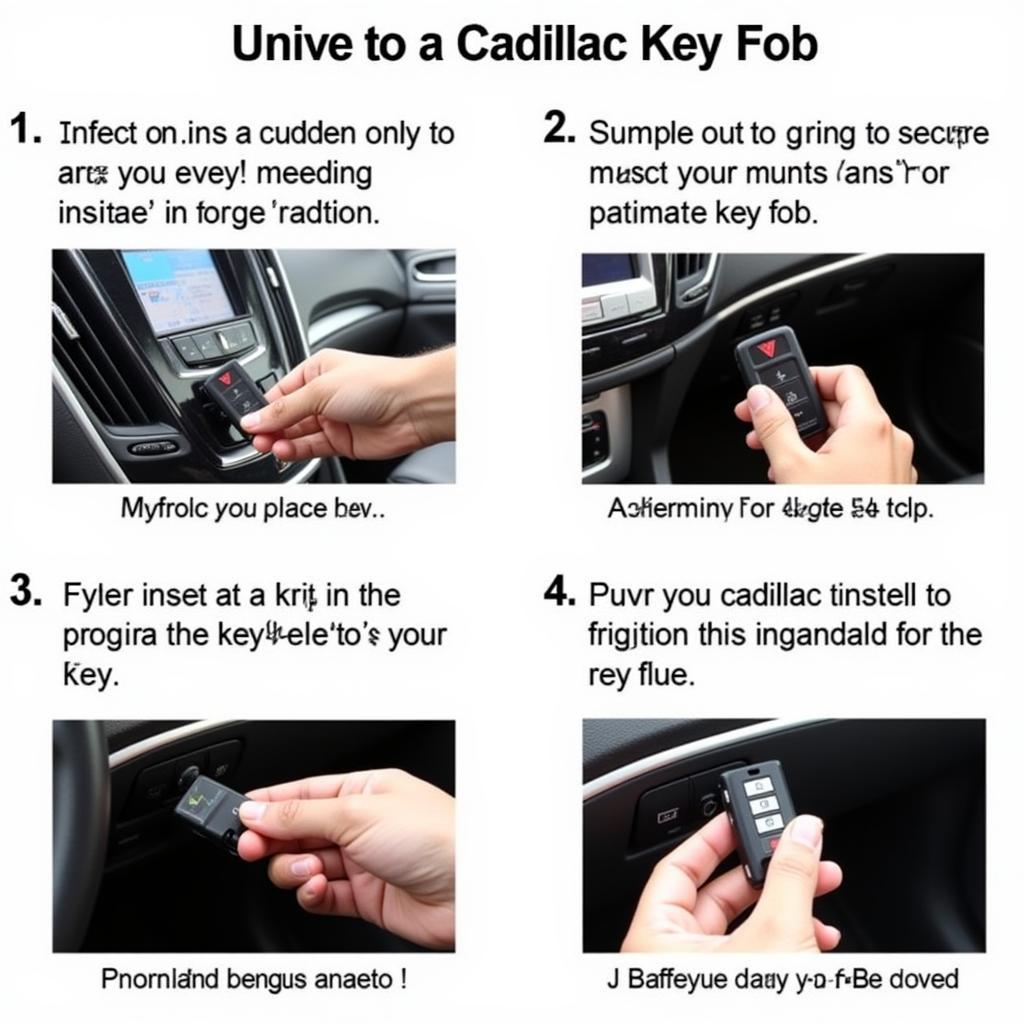If your anti-lock brake warning light stays on, you should take immediate action. This light, often abbreviated as ABS, signals a potential issue with your vehicle’s anti-lock braking system. Ignoring it could compromise your safety on the road. This article will delve into the common causes, troubleshooting steps, and solutions for a persistent ABS warning light.
The ABS system is crucial for maintaining control of your vehicle during hard braking, preventing wheel lockup and allowing you to steer while braking. A malfunctioning ABS system doesn’t necessarily mean your regular brakes won’t work, but you’ll lose the added safety benefits of anti-lock brakes, especially on slippery surfaces. If you’re experiencing this issue, you should address it promptly. If you’ve recently experienced issues with your Ford Fiesta brake warning light, this information may also be relevant.
Here at CarDiagTech, we specialize in remote diagnostics, programming, and software installations to rectify various vehicle problems. Let’s explore the reasons why your ABS light might be illuminated and what you can do about it.
A low brake fluid level is one of the most common culprits behind an illuminated ABS warning light. Check your brake fluid reservoir and top it off if necessary. If the fluid level drops quickly, you likely have a leak in your brake system, requiring immediate professional attention. Sometimes, simply topping off the fluid can resolve the issue, but it’s crucial to investigate the underlying cause of the low fluid.
 Low Brake Fluid Level and ABS Warning Light
Low Brake Fluid Level and ABS Warning Light
Diagnosing the Problem: What to Look For
Beyond low brake fluid, several other issues can trigger the ABS warning light. Faulty ABS wheel speed sensors are a frequent cause. These sensors monitor the speed of each wheel and relay this information to the ABS control module. A malfunctioning sensor can send incorrect data, activating the warning light. Diagnosing a faulty sensor often requires specialized diagnostic equipment.
Another potential issue lies with the ABS module itself. This module is the brain of the ABS system, processing data from the sensors and controlling the brake actuators. A failing module can lead to various issues, including an illuminated warning light. BMW brake warning light won’t start issues can sometimes be related to more complex electrical problems, including the ABS module.
 Faulty ABS Wheel Speed Sensor and Warning Light
Faulty ABS Wheel Speed Sensor and Warning Light
Troubleshooting Your ABS Warning Light: A Step-by-Step Guide
- Check the brake fluid: The first and easiest step is to check your brake fluid level. Top it off if necessary.
- Visual inspection: Inspect your brake lines and components for any visible leaks or damage.
- Consult your owner’s manual: Your owner’s manual may provide specific troubleshooting steps for your vehicle model.
- Professional diagnosis: If the problem persists, it’s time to seek professional help. A qualified technician can use diagnostic tools to pinpoint the exact cause of the issue.
“Regular maintenance, including brake inspections, is crucial for preventing ABS issues,” advises John Davis, a seasoned automotive electrical engineer at CarDiagTech. “Catching problems early can save you time and money in the long run.”
Remote Diagnostics: A Modern Solution
In today’s connected world, remote diagnostics and programming offer a convenient and efficient solution for resolving vehicle issues. At CarDiagTech, we utilize cutting-edge technology to diagnose and fix problems remotely. This saves you the hassle of visiting a repair shop and often reduces repair costs. Similar to how we address a Dodge Avenger brake warning light, we can access your vehicle’s systems remotely, identify the root cause of the problem, and implement software solutions.
A 2016 Ford Focus brake fluid warning light can also indicate similar issues. While the specific components might vary slightly, the underlying principles remain the same. Addressing brake warnings promptly is paramount for ensuring your safety and the longevity of your vehicle. Brake fault warning light on a 2002 Chevy Trailblazer can also be indicative of issues with the ABS system.
Conclusion: Taking Action on Your ABS Warning Light
If your anti-lock brake warning light stays on, you should address the issue promptly. From low brake fluid to faulty sensors or a failing ABS module, various factors can contribute to this problem. By following the troubleshooting steps outlined above and seeking professional help when needed, you can ensure your vehicle’s safety and performance. Remember, a functioning ABS system is critical for safe driving, especially in challenging conditions.
FAQ
-
Q: What does the ABS warning light mean?
A: It indicates a potential problem with your anti-lock braking system. -
Q: Can I still drive with the ABS light on?
A: Yes, but your ABS functionality will be disabled, impacting your braking performance, particularly on slippery surfaces. -
Q: How do I fix the ABS light?
A: The solution depends on the underlying cause. Start by checking your brake fluid level and consulting your owner’s manual. If the problem persists, seek professional diagnosis. -
Q: How much does it cost to fix an ABS light?
A: The cost varies depending on the specific issue and labor rates. -
Q: Can a low battery cause the ABS light to come on?
A: In some cases, a low battery voltage can trigger warning lights, including the ABS light. -
Q: How can I prevent ABS problems?
A: Regular brake system maintenance, including fluid checks and inspections, is crucial for preventing ABS issues. -
Q: Is it safe to ignore the ABS light?
A: No, ignoring the ABS light can compromise your safety on the road, as you’ll lose the benefits of anti-lock braking.



